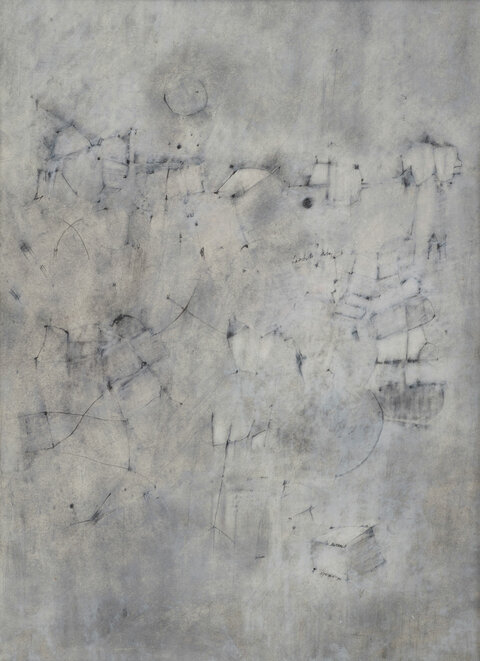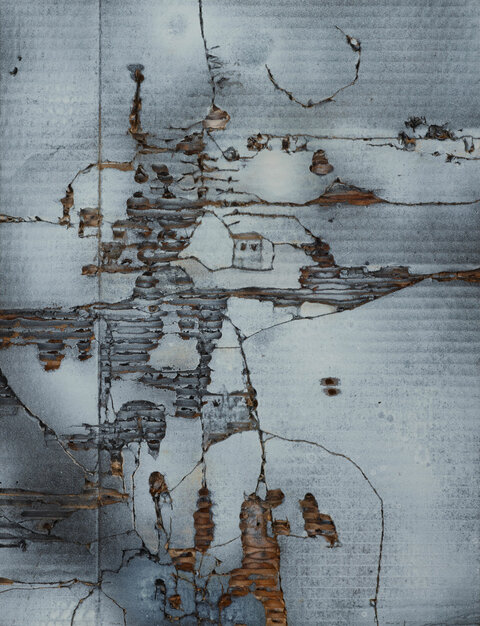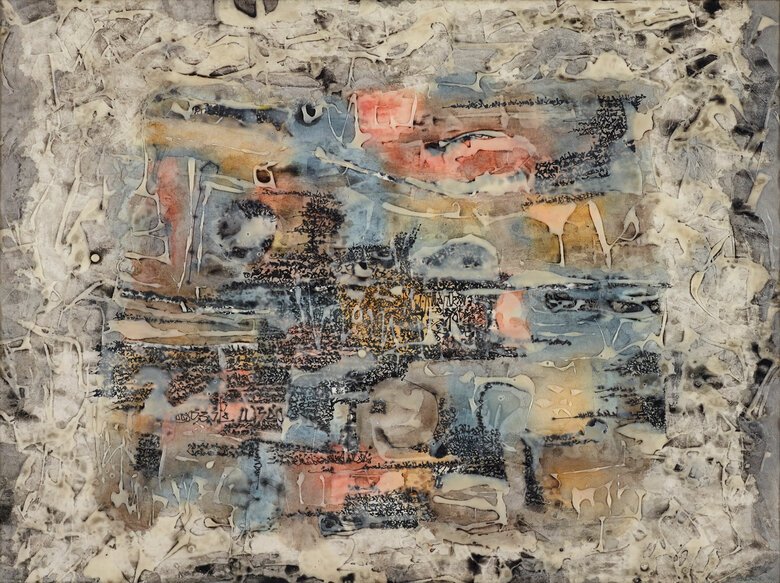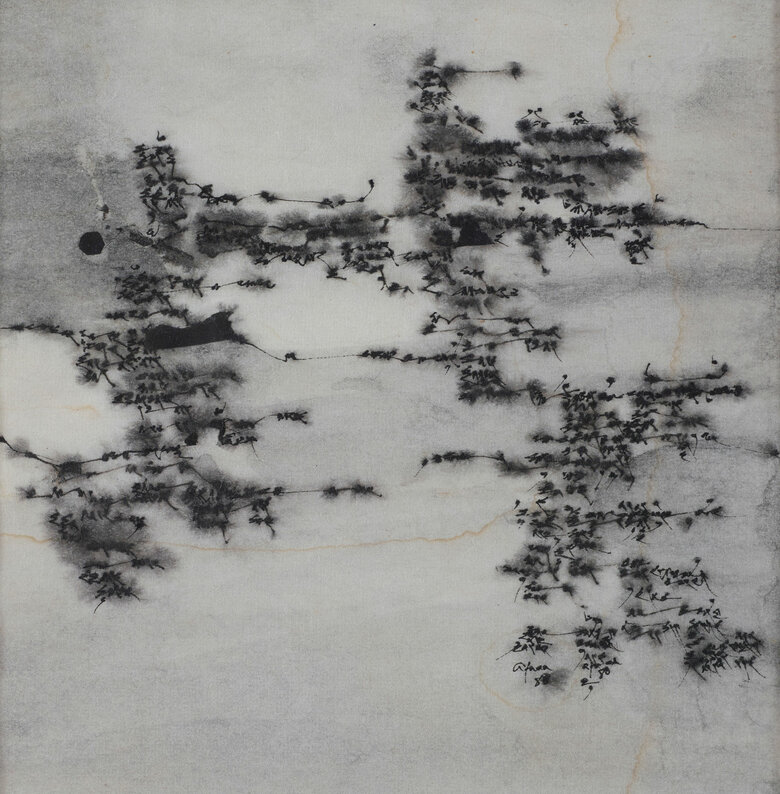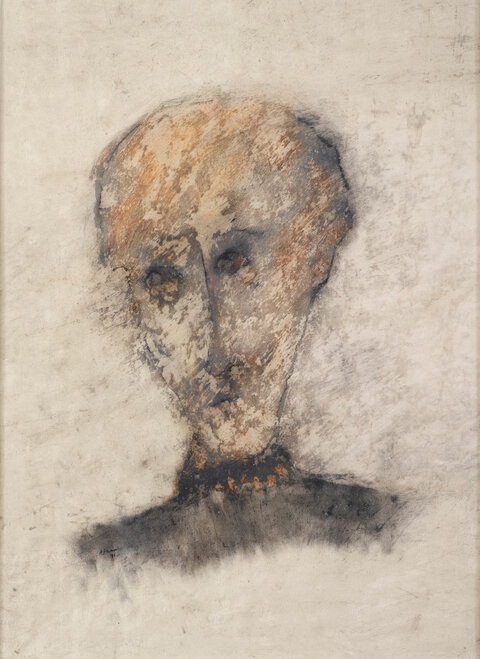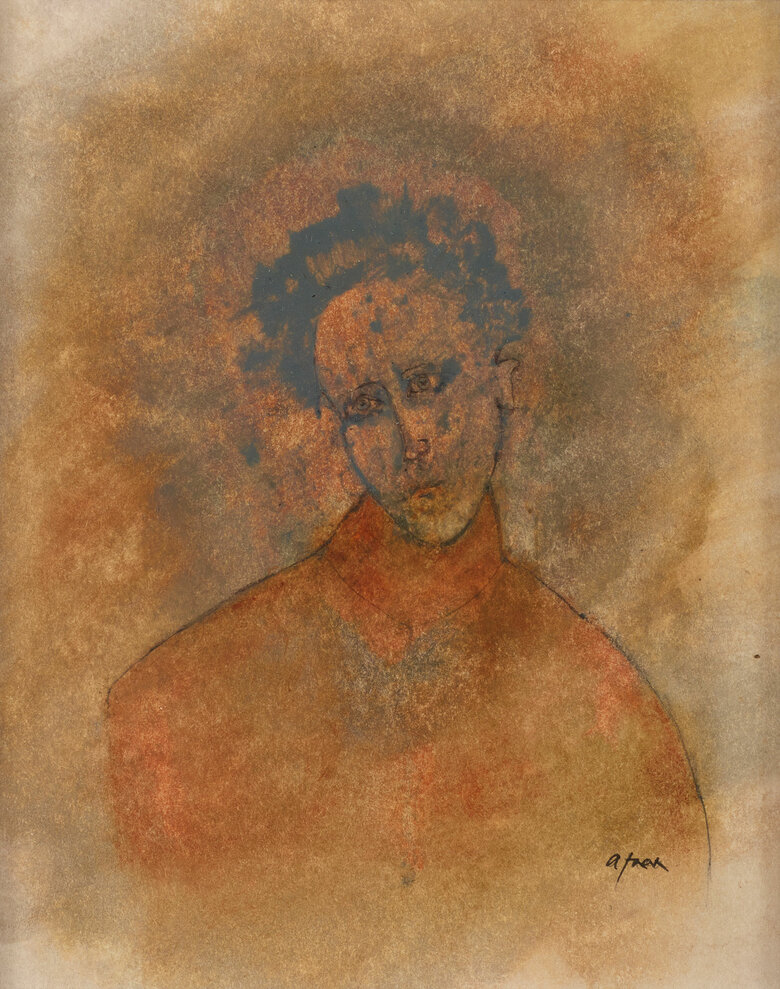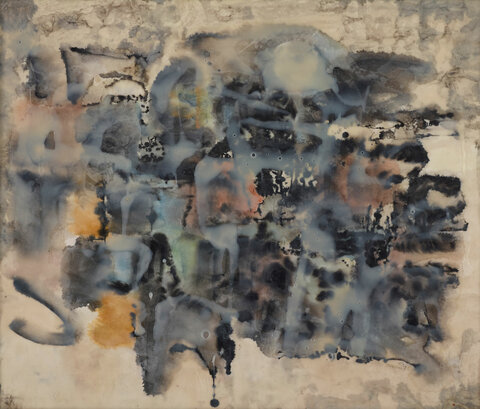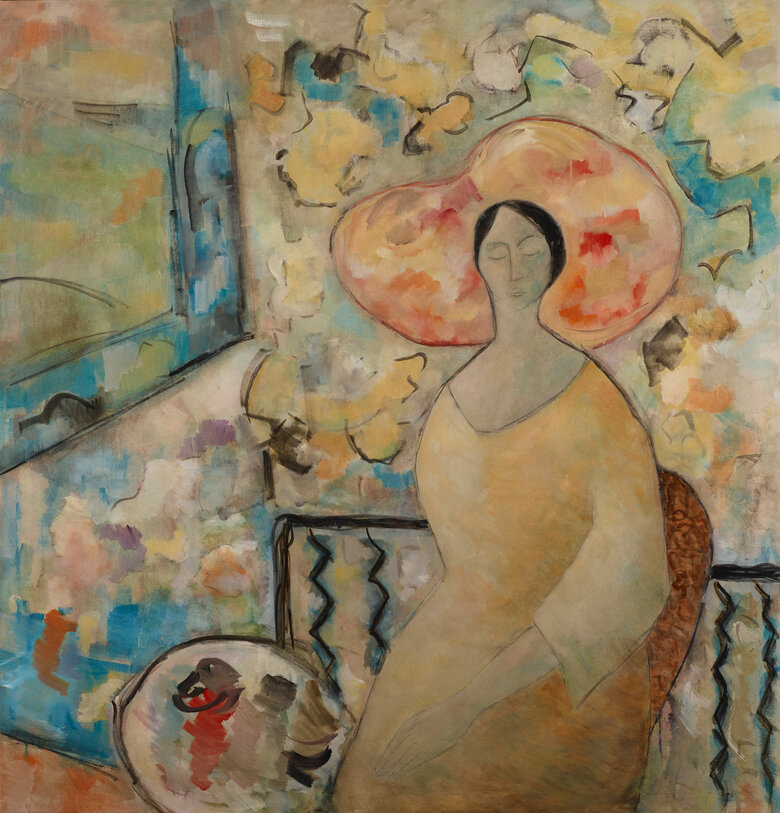Written by Fadia Antar Maliheh Afnan was born in Haifa, Palestine, in 1935, to a Persian family who fled Iran persecuted because of their Baha’i faith. In 1949, a year after the Nakba (the...
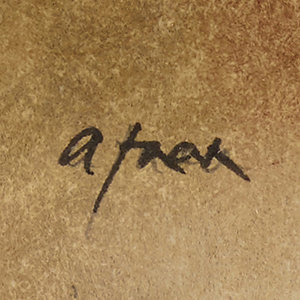

MALIHEH AFNAN, Palestine (1935 - 2016)
Bio
Written by Fadia Antar
Maliheh Afnan was born in Haifa, Palestine, in 1935, to a Persian family who fled Iran persecuted because of their Baha’i faith. In 1949, a year after the Nakba (the Zionists deadly attacks on Palestinians in 1948), and after witnessing the second world war and the air raids on Haifa, the Afnans were forced to leave and settle in Beirut. There, Maliheh Afnan attended high school then received her BA in Sociology and Psychology at the American University of Beirut, in 1955. She moved to Washington DC, USA, in 1956 and graduated with an MA in Fine Arts from the Corcoran School of Art in 1962. Since, she had a life of perpetual displacements, moving to Kuwait from 1963 to 66 then to Beirut until 1974. Afnan left Beirut to Paris and finally settled in London in 1997.
Since childhood and before she could read or write, the forms of letters and words fascinate Afnan[1]: in Haifa, she collected official papers and bills written in English, Hebrew, and Arabic. This fascination, was not only reflected in her early art school projects when she started incorporating letters, words, and fragments of words on patches of paint, but also carried on until later in her career. Afnan soon developed her own style of “writing her paintings” as she would claim, but the flame that nourished her practice was the discovery of the art of Mark Tobey(1890- 1976), an American artist who legitimized and introduced the use of abstract calligraphy and scripts into modern art. Afnan got acquainted with his art at the Philips Collection, Washington DC, and later on, when she visited his studio in Switzerland. Mark Tobey eventually became her mentor and facilitated her first solo exhibition at the Galerie Claire Brambach, in Basel, Switzerland, in 1971.
The act of writing in itself was a performance where Afnan revived the past and transposed it to the present. All her lines of writings were reminiscences of old calligraphy and ancient scripts of the past Middle Eastern civilizations she originated from. The ancient cuneiform scripts (one of the earliest systems of writing, invented by Sumerians in ancient Mesopotamia) stayed a mystery and a source of inspiration for the artist: she contemplated these scripts not only as remains from an old civilization but also as time links between the past and the present. Furthermore, Afnan considered the effect of time on those scripts, and that led her to give an aged appearance to her contemporary works: she used earthy and rusty colors smudging her invented words with her fingers, scratching them on the surface of her paint, and stressing on the burnt rust, and decay effect. In her plaster reliefs works, she carved her scripts meticulously on plasticine, cast them with plaster, and finally painted the plaster with dark and earthy tones[2]. Her works appeared like a manifestation of excavated artifacts emerging from ancient civilizations. Additionally, Afnan’s lines of words did not bear any semantic references, nor did they refer to any meaning: they were just lines that filled the space and drew a meticulous path through the painting, rather a topography tool than a medium of communication[3].
Afnan’s time travels are tightly connected to her space navigations: her works are blurred visions of the lands, places, homes she lived in, and people she encountered. Her oeuvre is about memory. The artist transcribed her life of perpetual displacements into traces sealed on paper. Rooted in personal reminiscence, the themes she addressed advance from the intimate realms to the collective ones; by bringing in her mother tongues and transcribing them into scripts and patterns, she gave them a global and timeless identity. Her landscapes, as well, rendered in monochrome tones, transpierced by accumulations of lines and textures, depositing layer over another, are more a gestural manifestation than a geographic location, they represent the earth rather than the place.
Afnan’s work progressed in a spiral approach through the artist visiting and revisiting constantly and simultaneously sometimes, the five subjects she has worked on Ecritures or Traces (80s-90s), Paysages or Places (80s-90s), Personages or Faces (90s), Reliefs and Objects (90s-2000), and Veiled (2000-2009).
In her series of portraits drawings called Personages, she did not use any models to portray. The artist started with an ink line on paper, and the line formed itself into a figure emerging from memories and imagination[4]. The result would surprise the artist as if those ghostly portraits were revelations from the past. Each figure bears its unknown history and enigma. In her work Witness (1991) from the series Personages, she portrays the ravages of time and hardships on a person, the kind of sufferings humans should not witness.
Around the 2000s, Maliheh experimented with gauze, painting it in black or brown and incorporating it to her artwork[5]. The series Veiled was conceived to divert the Western world’s gaze from the Muslim women’s veil, by proposing different kinds of cover-ups that every human shields oneself behind. Afnan removed the veil from the head and placed it over truths, emotions, feelings, and threats. The titles she has chosen for her works were Veiled Melancholia, Veiled Emotion, Veiled Confrontation, Veiled Strategy.
For Afnan, who welcomed the effect of chance, and tackled her work without premeditated plans, the media of paper responded better to her ends[6]. Each sheet of paper has its distinctive potential of absorption, rigidity, or malleability calling on the artist to yield a different texture, transparency, or colorfastness. Performative in its essence, the art of Afnan took into account the materiality of the paper. She used ink, pen and pencils, watercolors, and oil pastels, always in intimate scales; her compositions were spontaneous but tidy.
Preferring reduction and subtlety to fanfare, Maliheh Afnan's work invades the viewer with its elegance. She was able, grounded in her precise historical references, to transcend any national affiliation and deploy herself as an international and contemporary artist.
Maliheh Afnan passed away in London in 2016.
[1] Projects, Rose Issa. “Maliheh Afnan: Traces, Faces & Places.” Vimeo, February 14, 2014. https://vimeo.com/86708890.
[2] Projects, Rose Issa. “Maliheh Afnan: Traces, Faces & Places.” Vimeo, February 14, 2014.https://vimeo.com/86708890.
[3] Maarouf, Mazen. “مليحة أفنان .” Dar Al Saqi. دار الساقي دار نشر بيروت لبنان, November 8, 2010. https://www.daralsaqi.com/content/جريدة-النهار-مليحة-أفنان-الخط-يقودني-إلى-حياة-يرسمها-بنفسه-مازن-معروف.
[4] Projects, Rose Issa. “Maliheh Afnan: Traces, Faces & Places.” Vimeo, February 14, 2014. https://vimeo.com/86708890.
[5] Mirrors to Windows: Maliheh Afnan. YouTube. Susan Steinberg, 2012. https://www.youtube.com/watch?v=nITNwGECDtY.
[6] Becker Luz, John Berger, Rose Issa, Maliheh Afnan, and Keith Patrick. Maliheh Afnan: Traces, Faces and Places. London: SAQI Books in association with Beyond Art Production, 2010.
Sources:
Becker Luz, John Berger, Rose Issa, Maliheh Afnan, and Keith Patrick. Maliheh Afnan: Traces, Faces and Places. London: SAQI Books in association with Beyond Art Production, 2010.
United Kingdom: Rose Issa Projects, 2014. March 07, 2014. Accessed October 02, 2017. https://www.youtube.com/watch?v=xvLK2tdp_qc
Steinberg, Susan. Documentary. 2012. August 22, 2012. Accessed October 02, 2017. https://www.youtube.com/watch?v=nITNwGECDtY
Afnan, Maliheh, and Luigi Fassi. Personnages: Maliheh Afnan. Cagliari: Arkadia, 2019.
Maarouf, Mazen. “مليحة أفنان .” Dar Al Saqi. دار الساقي دار نشر بيروت لبنان, November 8, 2010. https://www.daralsaqi.com/content/جريدة-النهار-مليحة-أفنان-الخط-يقودني-إلى-حياة-يرسمها-بنفسه-مازن-معروف.
Projects, Rose Issa. “Maliheh Afnan: Traces, Faces & Places.” Vimeo, February 14, 2014. https://vimeo.com/86708890.
Mirrors to Windows: Maliheh Afnan. YouTube. Susan Steinberg, 2012. https://www.youtube.com/watch?v=nITNwGECDtY.
CV
Selected Solo Exhibitions
2019
Personnages, Museo d’Arte Provincia di Nuoro, Nuoro, Italy
2016
Tracing Memories, Art Dubai Modern, with Lawrie Shabibi, Dubai, UAE
2014
Tonight the Door will be Opened, Galerie Kornfled, Berlin, Germany
2013
Speak Memory, Rose Issa Projects, London, UK
2010
Traces, Faces, Places, Rose Issa Projects, London, UK
2006
Selected Works 1960-2006, England &Co, London, UK
2000
England&Co, London, UK
1996
Gallerie Mouvances, Paris, France
1994
Theatre de Beyrouth, Beirut, Lebanon
Gallery 10 Bonaparte, Paris, France
1993
Leighton House Museum, London, UK
1987
Gallery Arcadia, Paris, France
1982
A&A Turner Gallery, Paris, France
1980
Gallery Brigitte Schehade, Paris, France
1978
Gallery Principe-Anne Merlet, Paris, France
1974
Gallery Cyrus, Paris, France
1971
Gallery Claire Brambach, Basel, Switzerland
Jafet Library, American University of Beirut, Beirut, Lebanon
The Alumni Association, American University of Beirut, Beirut, Lebanon
Selected Group Exhibitions
2024
From the Baroque to Today: New Acquisitions of Works on Paper, The Courtauld Gallery, London, UK
Arab Presences: Modern Art And Decolonisation: Paris 1908-1988, Musée d'Art Moderne de Paris, Paris, France
Die Schrift ist weiblich. Bild und Text in der internationalen Kunst, Kunstforum Hermann Stenner, Bielefeld, Germany
2023
The Future Of Traditions, Writing Pictures Contemporary Art From The Middle East, The Brunei Gallery, SOAS, London, UK
Action, Gesture, Paint: Women Artists and Global Abstraction 1940–70, Whitechapel Art Gallery, London, UK
Action, Gesture, Paint: Women Artists and Global Abstraction (1940–70), Fondation Vincent Van Gogh Arles, Arles, France
The Resistance of Pen and Paper, Richard Saltoun, London, UK
2022
Taking Shape: Abstraction from the Arab World, 1950s–1980s, The Block Museum, Illinois, USA
2020
Taking Shape: Abstraction from the Arab World, 1950-1980s, Grey Art Gallery, New York, USA
ONLINE: The Simmetry of Fragility, ICA Milano, Milano, Italy
2019
A la plume, au pinceau, au crayon: dessins du monde Arabe, Institut du Monde Arabe, Paris, France
2018
A Century In Flux, Sharjah Art Museum, Sharjah, UAE
2014
Asemic, Cultuurcentrum Brugge, Bruges, Belgium
2013
Hope Map, Cultuurcentrum Brugge, Bruges, Belgium
The Blue Route: Journeys and Beauty from the Mediterranean to China, Boghossian Foundation, Brussels, Belgium
2012
Persian for Beginners, Rose Issa Projects, London, UK
2011
Miragens, touring exhibition at the Centro Cultural Banco do Brasil, Rio de Janeiro, Sao Paulo and Brasilia, Brazil
Zendegi: Twelve Contemporary Iranian Artists (curated by Rose Issa Projects), Beirut Exhibition Center, Beirut, Lebanon
The Art of Writing, Kurhaus Kolonnade, Wiesbaden, Germany
2010
Modern Times – Responding to Chaos, Kettle’s Yard, Cambridge and De La Warr Pavilion, Bexhill- On-Sea, UK
2009
Pictorial Mappings of Islam and Modernity, Martin Gropius Bau Museum, Berlin, Germany; Courtauld Institue of Art, London, UK
2008
Re-Orientations: Contemporary Arab Representations, European Parliament, Brussels, Belgium
Routes, Waterhouse and Dodd, London, UK
World into Art, DIFC Building, Dubai, UAE
Occupied Space, AM Qattan Foundation, London, UK
Art Contemporain Arabe, Institut du Monde Arabe, Paris, France
2007
The Dance of Pen and Ink, Triumph Gallery, Moscow; The State Museum of Oriental Art, Moscow; and The State Hermitage Museum, St Petersburg, Russia
Word into Art, The British Museum, London, UK
2001
Iranian Contemporary Art, Curve Gallery, Barbican Centre, London, UK
Galerie du Chateau, Noirmoutier en I’lle, France
Salon de Realities Nouvelles , Espace Branly, Paris, France
1997
Traditions of Respect: British and Islamic Cultures, The British Council, London, UK
1996
Salon de Réalités Nouvelles, Espace Branly, Paris, France
1995
Salon d’Automne, Thorigny-Sur Marne, France
Salon Comparaisons, Espace Branly, Paris, France
Salon du Dessin et de la Peinture a l’Eau, Espace Branly, Paris, France
Recent Acquisitions, The British Museum, London, UK
Salon de Réalités Nouvelles, Espace Branly, Paris, France
1994
Salon de Réalités Nouvelles, Espace Branly, Paris, France
1993
Salon d’Automne, Grand Palais, Paris, France
1992
Galerie du Chene-Donald Vallton, Lausanne, Switzerland
Salon d’Automne, Grand Palais, Paris, France
1991
Collecting 20th Century Art, The British Museum, London, UK
Salon d’Automne, Grand Palais, Paris, France
1990
Salon d’Automne, Grand Palais, Paris, France
1989
Contemporary Artists and Calligraphy, Egee Art, London, UK
1988
Galerie Faris, Paris, France
Galerie du Chateau, Noirmoutier en I’lle, France
Painting and Sculpture at the End of the 20th century, European Cultural Centre of Delphi, Greece
1985
Selected Artists, Kufa Gallery, London, UK
Paysages, Galerie Faris, Paris, France
1984
Salon des Réalités Nouvelles, Grand Palais, Paris, France
1972-
1987
Mac 2000, Grand Palais, Paris, France
Salon Comparaisons, Gran Palais, Paris, France
Galerie Faris, Paris, France
Galerie D’Art Comparaisons, Paris, France
Ecritures du Temps Present, Centre d’action Culturelle Pablo Neruda, France
Salon des Réalités Nouvelles, Grand Palais, Paris, France
Petits Formats, Galerie Principe, Paris, France
Salon d’Automne, Grand Palais, Paris, France
Les Dessins de l’Été, Galerie Principe, Paris, France
Centre Culturel Valérie Larbaud, Vichy, France
Young Artists 1973, New York, US
1971
Centre d’Art De Beyrouth Gallery, Beirut, Lebanon
1963
66th and 67th National Exhibition of the Washington Watercolor Association, Smithsonian Institution, Washington DC, US
1962-
1964
15th and 16th Area Exhibitions, Corcoran Gallery of Art, Washington DC, US
Collections
Akram Ojjeh Foundation, Paris, France
BAII Bank Collection, Paris, France
Institut du Monde Arabe, Paris, France
The British Museum, London, UK
Barjeel Art Foundation, Sharjah, UAE
Ramzi and Saeda Dalloul Art Foundation, Beirut, Lebanon
Written Art Collection, Germany
The Metropolitan Museum, New York City, US
The British Museum, London, UK
Grand Palais, Paris, France
Museo d’Arte Provincia di Nuoro, Nuoro, Italy
Documents
MALIHEH AFNAN (1935 - 2016) TRACING MEMORIES ART DUBAI MODERN 2016
Lawrie Shabibi Gallery
English, 2016
Art Dubai Booth Booklet
Maliheh Afnan: Traces, Faces, Places
Rose Issa
Saqi Books & Beyond Art Productions, English, 2010
Excerpt (forward) from Bookrn
MALIHEH AFNAN Artwork
Become a Member
Join us in our endless discovery of modern and contemporary Arab art
Become a Member
Get updates from DAF
Follow Artists
Save your favourite Artworks
Share your perspectives on Artworks
Be part of our community
It's Free!
We value your privacy
TermsCookiesPrivacy Policies
Become a Member
Get updates from DAF
Follow Artists
Save your favourite Artworks
Share your perspectives on Artworks
Be part of our community
It's Free!
We value your privacy
TermsCookiesPrivacy Policies
Become a Member
Get updates from DAF
Follow Artists
Save your favourite Artworks
Share your perspectives on Artworks
Be part of our community
It's Free!
We value your privacy
TermsCookiesPrivacy Policies
Welcome to the Dalloul Art Foundation
Thank you for joining our community
If you have entered your email to become a member of the Dalloul Art Foundation, please click the button below to confirm your email and agree to our Terms, Cookie & Privacy policies.
We value your privacy, see how
Become a Member
Get updates from DAF
Follow Artists
Save your favourite Artworks
Share your perspectives on Artworks
Be part of our community
It's Free!
We value your privacy
TermsCookiesPrivacy Policies


